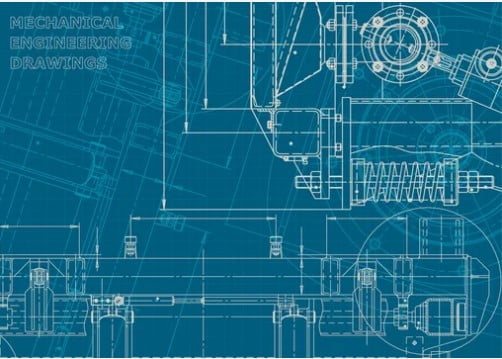In today’s rapidly evolving technological landscape, the protection of intellectual property (IP) has become a critical concern for inventors, creators, and businesses alike. One vital aspect of safeguarding innovative ideas is the use of patent drawings, which play a crucial role in illustrating and describing inventions in patent applications. Over the years, innovations in patent drawing technology have transformed the way inventors visualize, create, and present their concepts, significantly impacting the IP protection landscape. In this article, we delve into the latest advancements in patent drawing technology and their potential to shape the future of IP protection.
The Evolution of Patent Drawings
Patent drawings, a fundamental component of the patent application process, have undergone a remarkable evolution over the centuries. From rudimentary hand-drawn sketches to sophisticated digital renderings, the evolution of patent drawings reflects both the advancements in technology and the changing needs of inventors, patent examiners, and the legal system. This article explores the intriguing journey of patent drawings through time, tracing their development from humble beginnings to the present day.
- 1. Early Patent Drawings: The Age of Handcrafted Illustrations
In the early days of patenting, inventors were required to submit detailed hand-drawn illustrations alongside their patent applications. These illustrations aimed to provide patent examiners with a visual representation of the invention’s structure and operation. Inventors, often lacking formal artistic training, would painstakingly sketch their inventions, resulting in drawings that varied widely in quality and accuracy. Despite their limitations, these early patent drawings were crucial for conveying the essence of the invention to examiners.
- 2. The Industrial Revolution and Standardization
The Industrial Revolution brought about significant changes in patenting and patent drawings. With the rise of mechanical engineering and mass production, the need for standardized and accurate illustrations became more pronounced. Technical advancements, such as lithography, enabled more precise reproduction of patent drawings. This era witnessed the emergence of professional draftsmen and illustrators who specialized in creating patent drawings, ensuring a higher level of consistency and quality.
- 3. The Advent of Photography and Photolithography
The late 19th century saw the integration of photography into the patent application process. Photographs provided a new level of accuracy and detail, especially for inventions that were challenging to illustrate through hand-drawn sketches alone. Photolithography, a technique that involved transferring photographs onto patent documents, further enhanced the visual clarity of patent drawings.
- 4. Computer-Aided Design (CAD) Revolutionizes Patent Drawings
The late 20th century marked a significant turning point with the introduction of computer-aided design (CAD) software. CAD tools revolutionized patent drawing creation by enabling inventors, engineers, and draftsmen to produce precise and scalable drawings digitally. This shift eliminated many of the limitations associated with traditional manual drawing techniques, such as inaccuracies, scaling issues, and time-consuming revisions.
- 5. Digital Era and Beyond: Advancements in Visualization and Communication
The digital era brought forth a multitude of advancements that continue to shape the evolution of patent drawings:
- 3D Modeling: The ability to create three-dimensional models of inventions using CAD software revolutionized patent drawings. 3D modeling offers a comprehensive understanding of an invention’s form and function, aiding both patent examiners and potential licensees.
- Virtual Reality (VR) and Augmented Reality (AR): VR and AR technologies allow inventors to immerse stakeholders in virtual environments showcasing the practical applications of their inventions. This interactive experience bridges the gap between imagination and reality.
- AI-Driven Illustration Tools: Artificial intelligence has introduced AI-driven illustration tools that can generate accurate drawings based on written descriptions. These tools streamline the creation process and ensure consistency in patent drawings.
Innovations in Patent Drawing Technology
Intellectual property protection is paramount in today’s innovation-driven world, and patent drawings play a pivotal role in safeguarding inventive concepts. As technology advances, so does the realm of patent drawing, offering new avenues for creators and inventors to communicate and protect their ideas. In this article, we delve into some of the most exciting innovations in patent drawing technology and explore how they are shaping the landscape of intellectual property protection.
1. 3D Modeling and Visualization
Three-dimensional (3D) modeling technology has emerged as a game-changer in patent drawing. Traditionally, inventors relied on 2D drawings to convey their ideas, often struggling to capture the intricacies of complex inventions. However, 3D modeling allows creators to generate detailed and accurate virtual representations of their innovations. This technology enables patent examiners, investors, and stakeholders to explore the invention from various angles, gaining a comprehensive understanding of its structure and functionality. By providing a more immersive experience, 3D modeling enhances clarity and reduces the risk of misinterpretation.
2. Virtual Reality (VR) and Augmented Reality (AR)
Virtual Reality (VR) and Augmented Reality (AR) technologies have transcended the boundaries of traditional patent drawings. With VR and AR, inventors can transport stakeholders into interactive virtual worlds where inventions come to life. Imagine walking through a virtual prototype of an innovative machine or manipulating a holographic representation of a medical device. These technologies enable inventors to showcase the practical applications of their creations in ways that were previously unimaginable. Patent examiners can engage with inventions on an entirely new level, leading to more accurate evaluations and quicker decision-making.
3. AI-Enhanced Illustration Tools
Artificial Intelligence (AI) has revolutionized numerous industries, and patent drawing is no exception. AI-powered illustration tools have emerged to simplify and expedite the creation of patent drawings. These tools can analyze written descriptions provided by inventors and automatically generate detailed illustrations. This innovation not only reduces the time and effort required for drawing creation but also ensures consistency and accuracy across patent applications. AI-driven tools make the patenting process more accessible, especially for inventors with limited artistic skills, as they can now rely on technology to visually depict their ideas.
4. Interactive and Dynamic Drawings
Static patent drawings are being transformed into interactive and dynamic visuals. Instead of passively observing a drawing, stakeholders can now interact with it. Interactive drawings allow users to manipulate various components of an invention, zoom in on specific details, and explore its functionalities in a hands-on manner. This enhanced engagement provides patent examiners with a more holistic understanding of the invention, making it easier to assess its uniqueness and potential impact.
5. Cloud-Based Collaboration
Collaboration is key in the patenting process, and cloud-based technology has streamlined this aspect of patent drawing creation. Inventors, illustrators, and legal experts can collaborate in real-time, regardless of their geographical locations. Cloud-based platforms facilitate seamless communication, enabling multiple stakeholders to contribute to patent drawings simultaneously. This technology fosters efficiency, reduces delays, and ensures that patent drawings accurately represent the inventor’s vision.
The Impact on IP Protection
The Impact of Innovations in Patent Drawing Technology on Intellectual Property Protection
In the ever-evolving landscape of intellectual property (IP) protection, innovations in patent drawing technology have emerged as a powerful force. These technological advancements are not only reshaping the way inventors visualize and communicate their ideas but also revolutionizing the entire process of safeguarding innovative concepts. In this article, we delve into the profound impact of these innovations on IP protection and explore how they are shaping the future of intellectual property rights.
1. Enhanced Clarity and Understanding
One of the immediate and significant impacts of innovations in patent drawing technology is the enhanced clarity and understanding they bring to patent applications. Traditional 2D drawings often struggled to capture the intricate details of complex inventions, leading to potential misunderstandings or misinterpretations. With the advent of 3D modeling and visualization tools, inventors can now provide patent examiners, legal experts, and potential licensees with a more comprehensive view of their creations. The ability to present inventions in a three-dimensional space allows stakeholders to grasp the design, functionality, and interactions of the invention more intuitively. This heightened clarity reduces ambiguity, increases the accuracy of patent evaluations, and ultimately strengthens the protection of innovative ideas.
2. Streamlined Examination and Decision-Making
In the world of patent applications, time is of the essence. The traditional process of reviewing textual descriptions and static drawings can be time-consuming and subject to interpretation. Innovations such as AI-driven illustration tools and interactive patent drawings have the potential to streamline the examination process. AI can analyze written descriptions and generate accurate illustrations automatically, expediting the creation of patent drawings. Interactive drawings, on the other hand, allow patent examiners to actively engage with the invention, enabling quicker and more informed decision-making. As a result, the time required for patent examination and approval can be significantly reduced, allowing inventors to secure their intellectual property rights more promptly.
3. Global Accessibility and Communication
Intellectual property protection knows no boundaries, and innovations in patent drawing technology are contributing to a more accessible and interconnected global IP landscape. With the rise of cloud-based collaboration platforms, inventors, legal experts, and illustrators can collaborate seamlessly across geographical distances. This fosters efficient communication and facilitates the exchange of ideas, ultimately leading to higher-quality patent applications. Additionally, the visual nature of patent drawings transcends language barriers, making it easier for inventors to communicate their ideas to a global audience. This enhanced accessibility ensures that innovative concepts can be protected and shared on a broader scale, contributing to a more interconnected and innovative world.
4. Strengthened Portfolio Management
Managing a portfolio of intellectual property assets can be a complex endeavor. Innovations in patent drawing technology are playing a crucial role in simplifying portfolio management. The integration of AI-driven tools and standardized 3D models allows inventors to create consistent and high-quality patent drawings across multiple applications. This standardization not only enhances the overall quality of patent applications but also makes it easier to manage and track various intellectual property assets. As inventors continue to expand their portfolios, these technological advancements provide the tools needed to efficiently manage and protect a diverse range of innovative ideas.
Conclusion
In conclusion, the world of intellectual property protection is undergoing a remarkable transformation driven by innovations in patent drawing technology. These advancements are reshaping the way inventors, creators, and businesses safeguard their innovative ideas while revolutionizing the entire process of IP protection. From enhanced clarity and understanding through 3D modeling and visualization to streamlined examination and decision-making with AI-driven tools, the impact of these innovations is far-reaching and multifaceted.
The ability to convey complex concepts through immersive 3D models has brought a new level of clarity to patent applications, reducing ambiguity and ensuring that patent examiners and stakeholders can truly grasp the essence of an invention. This has not only expedited the evaluation process but also contributed to more accurate and informed decision-making.
Moreover, the global accessibility facilitated by cloud-based collaboration platforms has transformed how inventors communicate and collaborate on their patent drawings. Language barriers are transcended, and inventors can now share their innovative visions with a worldwide audience, fostering an interconnected global community of innovation.
Read More:
Innovation Across Cultures: Patent Design Drawings as a Global Language











Leave A Comment